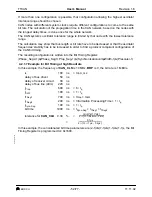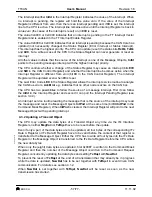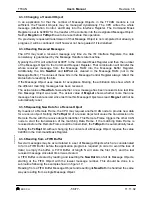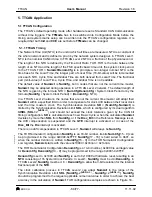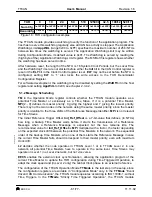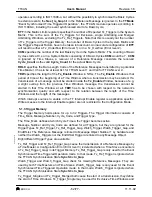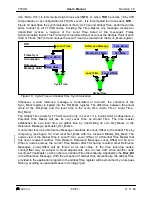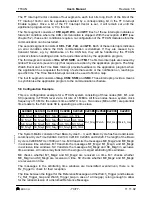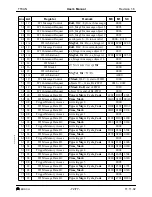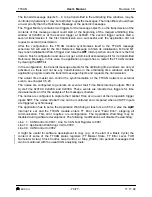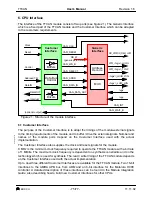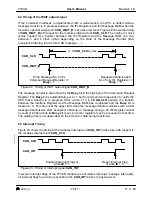
User’s Manual
BOSCH
- 66/77 -
Revision 1.6
TTCAN
11.11.02
manual_about.fm
reset or configuration, giving no acknowledge). When it reaches Initial_Watch_Trigger (not
part of the Trigger List, defined as maximum of Cycle Time), the attempted transmission is
aborted, IWT in the Interrupt Vector register is set, the FSE is frozen, and the Cycle Time will
become invalid, but the node will still be able to take part in CAN bus communication (to give
acknowledge or to send error flags). Resetting IWT will restart the FSE and Cycle Time, the
FSE will not be restarted by the reception of a Reference Message.
When a Potential Time Master reaches the Watch_Triggers after it has received any message
but the Reference Message, it will assume a Fatal Error (Error Level 3), set WTr in the
Interrupt Vector register, switch off its CAN bus output, and enter the Bus Monitoring Mode. In
the Bus Monitoring Mode, it is still able to receive messages, but it cannot send any dominant
bits (e.g. cannot give acknowledge). The Fatal Error state can be left via a re-configuration.
When no error is encountered during initialisation, the first Reference Message will put
SyncST to Synchronising and the second will put it (depending on its Next_is_Gap bit) into
In_Schedule or In_Gap, enabling all Tx_Triggers and Rx_Triggers.
A Potential Time Master will be in MState Current Time Master when it was the transmitter of
the last Reference Message, else it will be in MState Backup Time Master.
When all Potential Time Masters have finished Configuration, the node with the highest Time
Master Priority in the network will become the Current Time Master.
5.3 TTCAN Message Handling
5.3.1 Message Reception
In TTCAN, the handling of received message is the same as in Event driven CAN
Communication, see chapter 4.1.3.1. The message’s MSC will be updated at the message’s
Rx_Trigger(s) and gives additional means to check whether the received data arrived on time.
5.3.2 Message Transmission
In TTCAN, the handling of message to be transmitted is similar as in “Event driven CAN
Communication”, see chapter 4.1.2. The differences for periodic messages and event driven
messages are described in the following sections.
5.3.2.1 Periodic Messages
Neither TxRqst nor Newdat are changed from their preconfigured values. The application
program has to update the data regularly and on time, synchronised to the Cycle Time.
TTCAN’s CPU interface structure guarantees that no partially updated messages are
transmitted. The message’s MSC provides information on the success of the transmission.
The transmission may be temporarily disabled by resetting MsgLst or NewDat.
5.3.2.2 Event Driven Messages
The message data may be updated asynchronously to the Cycle Time, the transmission of the
event driven message inside an Arbitrating Time Window is requested by setting both TxRqst
and NewDat to ‘1’. The actual transmission is started time triggered when Cycle Time reaches
the Time_Mark of the Tx_Trigger_Single or Tx_Trigger_Merged configured for the Message
Object. Different from “Event driven CAN Communication”, the success of the transmission is
indicated when the Message Handler resets NewDat while TxRqst remains unchanged. The
MSC of an event driven message is not updated. When the transmission was not successful
(lost arbitration or disturbance), it will be repeated next time (one of) its Tx_Trigger(s)
become(s) active. When the transmission attempt was inside a Merged Arbitrating Time

